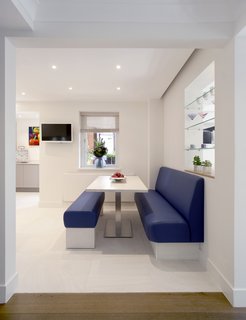Bench Seating: Where Comfort Meets Versatility
Wiki Article
Bench seating is definitely a staple in several settings, from parks and gardens to dining rooms and public transportation. Its enduring popularity could be attributed to an ideal balance it strikes between comfort, functionality, and elegance. In this article, we'll explore the concept of bench seating, its history, its diverse applications, as well as the many advantages that make it a favored choice both in residential and commercial spaces.

The of Bench Seating:
The concept of bench seating goes back to ancient civilizations. Egyptians, Greeks, and Romans all used variations of benches for seating purposes. These early benches were often created from wood and stone and were typically backless. Over time, bench design evolved, incorporating cushions and fabric for added comfort. In recent history, bench seating became a common feature in public transportation, parks, and sports stadiums.
Versatility and Space Efficiency:
One of the standout features of bench seating is its versatility. It may be customized to match a wide range of spaces, from cozy breakfast nooks to expansive dining areas and waiting rooms. Its space-saving design makes it an excellent option for smaller areas where individual chairs might feel cluttered.
Comfort and Social Interaction:
Bench seating is synonymous with comfort. Its continuous seating surface provides ample room to loosen up, relax, or cozy up with loved ones. Additionally, bench seating encourages social interaction by bringing people closer together. Be it sharing a meal, engaging in conversation, or having a view, benches develop a sense of togetherness that is often lacking with individual seating.
Outdoor and indoor Applications:
Bench seating seamlessly transitions between inside and outside spaces. In gardens and parks, benches offer a tranquil destination to enjoy nature. In dining rooms, they supply a communal dining experience. On patios and terraces, they create a welcoming environment for relaxation and socializing. Bench seating's adaptability is among its greatest assets.
Design Diversity:
Bench seating will come in a variety of designs, materials, and styles. From sleek and modern to rustic and traditional, there's a bench to match every aesthetic preference. Benches can be produced from wood, metal, concrete, or a combination of materials. They can feature backrests, cushions, as well as storage options, offering both comfort and functionality.
Residential and commercial Use:
In commercial spaces, bench seating can be a practical choice. It maximizes seating capacity in restaurants, cafes, and waiting areas while providing a cohesive look. In residential settings, bench seating adds character and charm to dining rooms, entryways, and bedrooms. Its adaptability makes it a versatile accessory for any space.
Conclusion:
Bench seating is a lot more than just a destination to sit; it's really a versatile and multifunctional design element that can transform any space into a comfortable and welcoming haven. Its rich history, adaptability, and style diversity make certain that bench seating will continue a beloved choice in the residential and commercial settings. Whether you're enjoying a meal with loved ones, taking a moment to unwind in a park, or awaiting your next adventure inside a transit station, Bench Seating remains an ageless and enduring section of our everyday life.